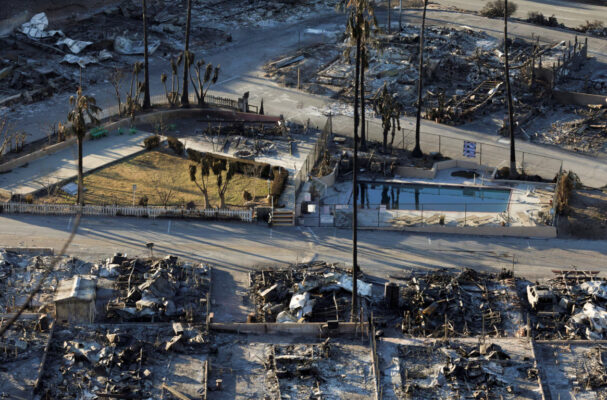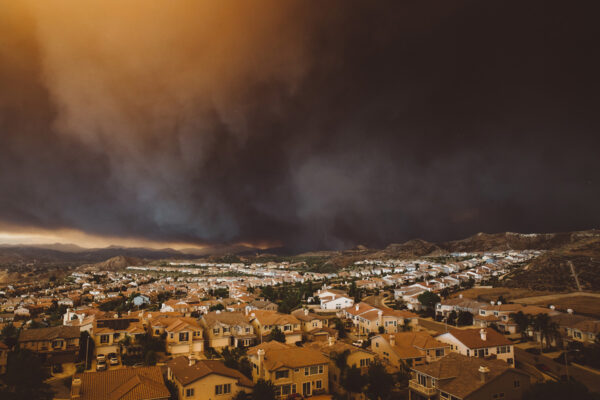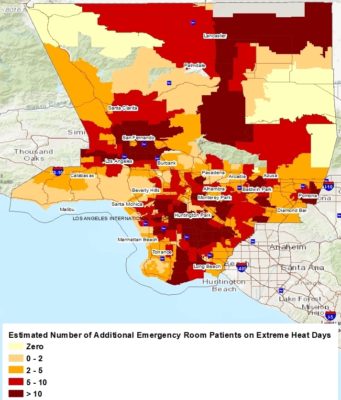By Diane Garcia-Gonzales and Michael Jerrett
Friday, Oct. 23 marked five years since the record-setting methane blowout at the Aliso Canyon natural gas storage facility. Aliso Canyon, located in Los Angeles County’s Santa Susana mountains, is the second largest natural gas storage facility in the western United States with a capacity of 86 billion cubic feet (or roughly 100,000 Olympic swimming pools).
The massive methane leak of 2015 resulted in the largest human-caused release of methane from a single point source in the history of the United States. Approximately 100,000 metric tons of methane were released before the leak was permanently plugged 118 days later, an amount which accounted for approximately one quarter of the year’s methane emissions from all sources within the Los Angeles Basin.
Methane is relatively non-toxic and does not have an established or regulated health threshold, but evidence collected by government agencies and researchers from UCLA, UC Berkeley, and Cambridge University in England raised questions about potential health effects from the toxic gases and particles released from the massive leak. Many residents complained about headaches, nose bleeds, and an array of other health problems that persisted long after the leak was plugged. Ongoing lawsuits allege that local residents of Porter Ranch have long-term health problems caused by the leak, along with workers such as firefighters who were exposed to air toxics when they first responded to the accident. As part of a multi-million dollar settlement with the operator of the facility, the California Attorney General directed $25 million to be given to the Los Angeles County of Public Health to study the long-term health effects caused by the leak. To our knowledge, the study has not yet commenced.
Although not an immediate health threat, methane can affect human health by contributing to climate change. If released into the atmosphere prior to use, methane absorbs the sun’s heat and warms the atmosphere. It is a worthwhile regulatory target for slowing global warming. Compared to carbon dioxide, which is the most prevalent greenhouse gas, methane has 25 times greater impact over a 100-year period. Three months after the leak was plugged, the Obama administration announced steps to regulate oil and gas industry emissions of methane, with signals that these regulations would broaden; but in August 2020, the U.S. Environmental Protection Agency announced the final rollback of these Obama-era methane rules. It was the end of a long battle by the Trump administration to relax requirements on how the industry identifies and repairs methane leaks.
Over the past few years, the conversation around renewables has shifted dramatically. A Gallup poll found that Americans overwhelmingly favor expanding the production of green energy sources (including solar and wind) and use of renewables has doubled in the last decade. It also makes good economic sense: The International Energy Agency’s World Energy Outlook for 2020 found that solar power offers the cheapest electricity in history. Moreover, a recent study by the UCLA Luskin Center for Innovation found that reducing carbon in the energy system could create as many as 100,000 new jobs annually across multiple sectors. The state of California has set a target of 100% clean energy by 2045, while Los Angeles Mayor Eric Garcetti announced the goal of reaching 80% renewable energy by 2036. These targets may seem ambitious, but for those living near natural gas facilities, the promise of 100% clean energy is still a long 25 years away.
Leaks along the natural gas lifecycle are not uncommon, somewhat putting into question the idea of a “cleaner” energy source. A new study suggests that while natural gas power plants are expected to lower greenhouse gas emissions compared with coal power plants, leaks along the whole lifecycle can eliminate this advantage. Natural gas (including methane), which has long been touted as the “bridge fuel” from coal towards renewable energy, may not, after all, be a step closer to a safer climate. This new study compounded with questions about potential health effects from leaks and rollback on Obama-era methane rules raises the question of not when but what will this transition look like.
Five years post-blowout, the Aliso Canyon natural gas storage facility continues to inject, store, and withdraw billions of cubic feet of methane, and we still do not understand the range of emissions or full range of potential health effects to those living downwind. While the state slowly crawls over the bridge towards renewables, we must ensure the transition occurs equitably and that communities do not bear unfair burdens as we move closer to a renewable energy future.






